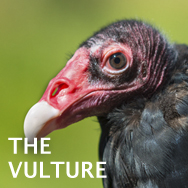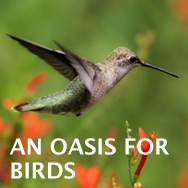

Join BirdNote tomorrow, November 30th!
Illustrator David Sibley and actor H. Jon Benjamin will face off in the bird illustration battle of the century during BirdNote's Year-end Celebration and Auction!
Join Alex Chadwick and former park ranger, Mark Flippo, in Big Bend National Park, as they explore the habitat and behavior of roadrunners.
Among our national parks, Big Bend, in Southwest Texas, is one of the least visited. It is enormous, a vast blend of desert, mountain, river, and tranquility. It is remote, for people, at least, though many creatures thrive there, including 450 species of birds. Here is BirdNote contributor Alex Chadwick.
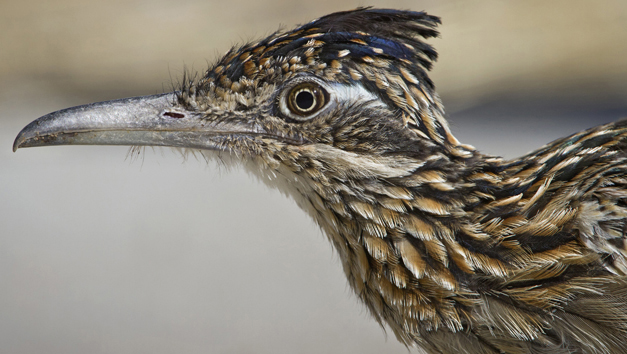
Transcript:
AC: We’re on a dirt and gravel road in a place called Dug Out Wells. I’m looking for birds with a guide.
MF: I’m Mark Flippo, I live in Terlingua, Texas. I'm a retired park ranger. Let’s go birding.
MF: Did you hear that? Mnn. Mnn. Mnn. That's the roadrunner.
AC: He stays busy finding birds, though not very successfully at the moment. And in place of birds, he offers a bird story.
MF: Roadrunners. I’ll tell you a roadrunner story.
AC: This is a bird I know only through the cartoon, though I do see them on the local roads, and they are runners….small, light, very alert, and quick. In the cartoon, the roadrunner is potential prey for a hungry coyote. But in life, the bird is an excellent predator.
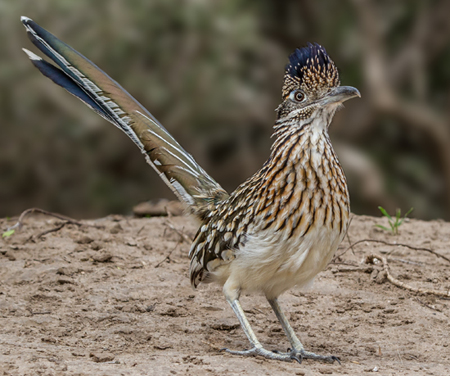
MF: They eat lizards, snakes, other birds, birds' nests, Cheetos, small children, cats, dogs, everything.
AC: And they don’t care who’s watching… a Big Bend true tale.
MF: A number of years ago, I was leading a birding program for the public. I had a bunch of people. It wasn’t really birding; it was more like a rodeo. There was, like, 50 people, you know?
AC: Fifty. That's a lot of people to take birding. Two can be a lot.
MF: We’re right down there at Rio Grande Village, and there were a bunch of sparrows that were in there…five, six different species.
AC: The 50 people circled the sparrows; everyone got out binoculars.
MF: And there was one odd sparrow in there. And I looked at it, and I was so surprised, "Wow! That’s a Baird’s Sparrow!" A Baird’s sparrow is a very rare, declining species.
AC: Uh-oh…I don’t like where this is going.
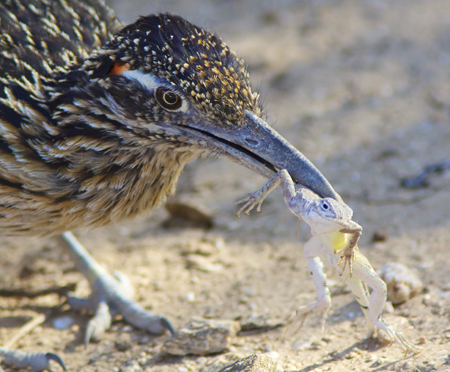
MF: And I'm, like, "Wow, this is great!" And I’m expounding on this Baird’s Sparrow mixed in with the Chipping Sparrows and all the other sparrows. And everybody’s watching this very rare sparrow. And then, out of the corner of my eye, I see movement on the ground, and here comes the roadrunner. And then, it goes into the crouch. And, you know when a roadrunner’s hunting, because they get low. Tail straight out, and they just make a bee-line.
AC: No, no, no, no.
MF: And all the other sparrows jump……when this roadrunner comes in. Except the Baird’s. The Baird’s has its head down, gettin’ a piece of seed, or something. I don’t know. And it was ... [snap of fingers] – that fast. The roadrunner… snags this Baird’s Sparrow. There’s, like, 100 sparrows in there. And it picks the one, the rarest sparrow.
And, I see a guy; he’s got his camera; he’s in the group. And, I say, "Photograph that, quick, quick!" because back then, it was a review species in Texas.
AC: Meaning, it's rare, and if you see one, you’re supposed to get a picture.
MF: So, he snaps a picture.
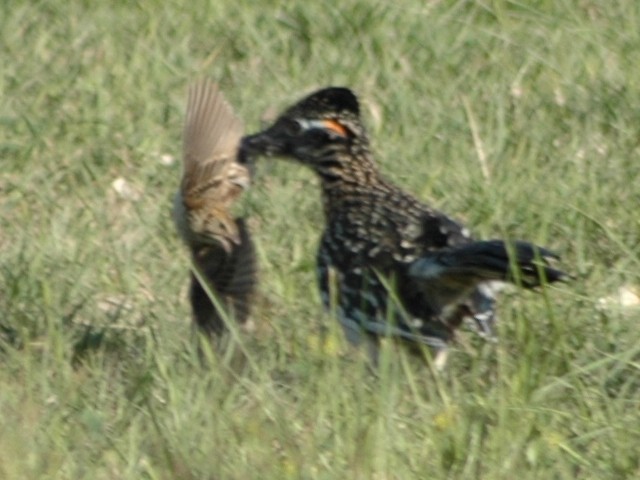
AC: Yes. Of a roadrunner going home with a Baird’s Sparrow sandwich.
MF: And, its wings are spread, and it’s gone. It’s dead; it’s gonna be eaten.
AC: But…is this now-deceased rarity to end as just another road kill in the roadrunner story? Or, might it achieve…more?
The Texas Bird Records Committee certified that the bird in the photo – the dead one – was a Baird’s Sparrow, and added that this was the first time the committee had ever certified a photo of a rare bird that was being eaten.
MF: So, the roadrunner helped in that respect.
AC: Mark Flippo finds birds - and stories - in Big Bend National Park, in Southwest Texas.
For BirdNote, this is Alex Chadwick.
###
This series was produced with generous funding from Deedie and Rusty Rose.
It's a fact!
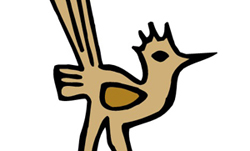
Which way is it going?
Roadrunners hold a special place in Native American and Mexican legends and belief systems. The birds were revered for their courage, strength, speed, and endurance. The distinctive X-shaped footprint, with two toes pointing forward and two backward, disguises the direction the roadrunner is heading, and is thought to prevent evil spirits from following.
- Cornell's All About Birds
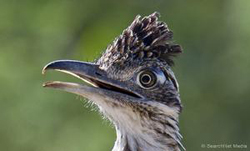
Beep beep!
The characters of Road Runner (Accelerati incredibilus) and Wile E. Coyote(Carnivorous vulgaris) were created by Chuck Jones for Warner Brothers in 1948. Michael Maltese was the writer of the early series of cartoons for Looney Tunes and Merrie Melodies.
Road Runner and Wile E. Coyote have appeared in nearly 50 cartoons.
Greater Roadrunner © SearchNet Media
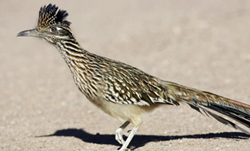
How fast?
With or without Wile E. Coyote chasing it, a Greater Roadrunner can reach speeds of 20 mph, while a coyote can reach speeds of up to 43 mph. That's according to Mark Lockwood’s Basic Texas Birds: A Field Guide and 10,000Birds.com.
The fastest human in the world clocks in at about 22 mph.
More Big Bend adventures:

